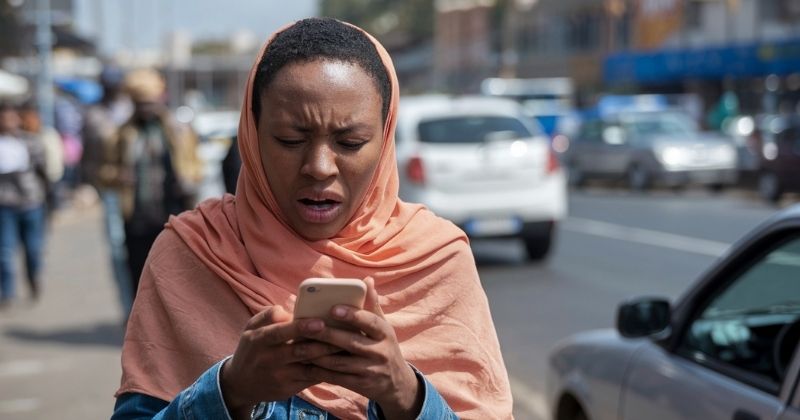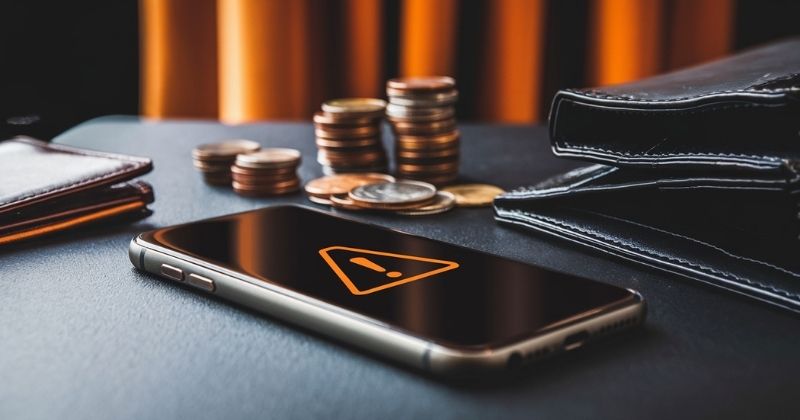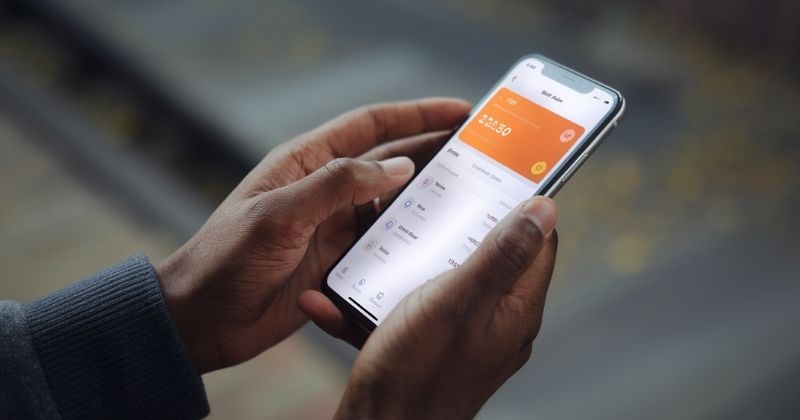
A new study has revealed a worrying surge in fraud linked to banking apps in South Africa, as financial services continue shifting towards mobile platforms. The increased reliance on smartphones for banking has made users more vulnerable to cybercriminals exploiting weaknesses in digital security.
Key Takeaways
- South Africans face a growing threat from banking app fraud: With mobile banking usage at 50%, far above the African average, cybercriminals are aggressively targeting users through phishing, SIM swap fraud, and stolen mobile devices.
- Stolen phones are a direct gateway to financial loss: Criminals exploit banking apps, personal emails, and digital wallets within minutes of acquiring a stolen device. SIM swap fraud and insider corruption within financial institutions further accelerate account takeovers.
- Immediate action is critical in the event of phone theft: The first priority should always be contacting the bank to de-link the banking app before blocking the SIM card. Stronger security measures, such as two-factor authentication and regularly updating banking apps, can significantly reduce the risk of fraud.
About Arcadia Finance
Need a loan? Arcadia Finance connects you with 19 reputable lenders—no application fees, full compliance with South Africa’s regulations, and a smooth, secure process.
The growing prevalence of mobile banking, combined with widespread smartphone usage, has significantly expanded the opportunities for fraudsters. Criminals are employing increasingly sophisticated tactics to gain access to financial data, putting South African users at heightened risk of financial losses and identity theft.
Financial crime experts warn that South Africa has become a prime target for digital fraud, with cybercriminals actively refining their methods to bypass security measures. In many cases, once they gain access to a banking app, they swiftly transfer funds, apply for loans in the victim’s name, and even use the stolen credentials to commit further fraud.

Report Highlights Risks of Mobile Banking in South Africa
The 2025 KnowBe4 African Cybersecurity & Awareness Report underscores the urgent need for South Africans to take extra precautions when managing their finances through banking apps. The study examines digital security habits and highlights vulnerabilities that leave users exposed to cyberattacks.
The report is based on a survey conducted in September 2024, gathering insights from hundreds of individuals between the ages of 30 and 60 across multiple African nations, including South Africa. The respondents represent a broad spectrum of industries, including financial services, government, healthcare, real estate, and telecommunications. Their feedback provides a comprehensive picture of how mobile banking habits intersect with cybersecurity awareness.
Alarmingly, the report suggests that South Africans are among the least cautious mobile banking users in Africa, with a significant percentage admitting they do not use security features such as multi-factor authentication. This lax approach, combined with a high adoption rate of digital financial services, has created an environment ripe for exploitation.
South Africans Lead in Mobile Banking Usage but Face Higher Risks
The study found that mobile financial services are now widely used, with an overwhelming 95% of respondents making use of either mobile banking, mobile payments, or both. This reflects a broader trend of financial institutions promoting digital convenience. However, the shift has created a much larger target for cybercriminals seeking to exploit security gaps.
Notably, South Africa stands out with a mobile banking adoption rate of 50%, far exceeding the continental average of 36%. While this demonstrates the country’s embrace of financial technology, it also increases exposure to digital threats. The more transactions that occur through mobile devices, the more opportunities criminals have to intercept sensitive financial information.
Financial experts warn that South Africa’s banking fraud crisis is further fuelled by the country’s high unemployment rate and struggling economy, making financial crime an attractive avenue for desperate individuals. Criminal syndicates have taken advantage of this reality, recruiting local fraudsters and offering training on how to exploit banking app weaknesses.
Mobile Devices: A Weak Link in Cybersecurity
Despite the convenience of mobile banking, smartphones and tablets are often used with less caution than traditional computers. Many users fail to implement adequate security measures, making them easy targets for cybercrime.
Unlike desktops or laptops, which are typically protected by antivirus software and firewalls, mobile devices are frequently left vulnerable due to poor security practices. The casual nature of smartphone usage means that many users neglect to update their apps and operating systems regularly, avoid using strong passwords, or fail to activate two-factor authentication.
Adding to these risks is the widespread use of secondhand or unsecured devices for banking transactions. Many South Africans continue to access financial services on older smartphones with outdated security patches, making them particularly susceptible to cyber threats.
Security analysts caution that cybercriminals are now developing malware specifically designed to exploit mobile banking apps. These malicious programs can record keystrokes, steal passwords, and even take control of a device remotely, making them a silent but devastating threat to unsuspecting users.
Even major banks aren’t immune to technical failures, which sometimes leave users locked out of their accounts. Just recently, Standard Bank suffered an outage, leaving customers frustrated and unable to access funds. If you rely on mobile banking, it’s worth knowing how outages can impact your transactions.

Spike in Cellphone Theft Fuels Banking Fraud
One of the most alarming aspects of mobile banking fraud in South Africa is its connection to the rising incidence of mobile phone theft. The theft of mobile devices has become a lucrative avenue for criminals looking to access financial data.
On average, 189 mobile phones are stolen daily in South Africa, with women often being the primary targets. Criminals use various tactics to steal devices, from opportunistic snatch-and-grab incidents in busy public spaces to more violent methods such as armed robberies.
Once a device is in the hands of criminals, it becomes a direct gateway to highly sensitive information. If banking apps are not adequately secured, fraudsters can gain full access to financial accounts, identity documents, and personal data, leading to severe financial and emotional distress for victims.
Between April 2017 and March 2023, the South African Police Service (SAPS) recorded 412,998 mobile phones stolen, yet only 29% of these devices were blacklisted by service providers. The highest number of reported thefts occurred in Gauteng (29%), followed by the Western Cape (26%), KwaZulu-Natal (20%), and the Eastern Cape (7%).
Some victims report that within minutes of a phone being stolen, their banking accounts have already been accessed, with funds rapidly transferred to mule accounts before the fraud can be stopped. Criminals have also been known to sell stolen banking details on the dark web, allowing international fraudsters to exploit South African banking vulnerabilities.
Stolen Phones: A Direct Path to Banking Fraud
The South African Banking Risk Information Centre (SABRIC) has repeatedly warned that mobile phone theft is not just about reselling stolen devices—it is about gaining access to highly valuable financial data. Criminals target banking apps, delivery services, digital wallets, and email accounts, all of which may contain sensitive details such as bank statements, proof of residence, and identity documents.
Fraudsters frequently exploit stolen phones by using SIM swap fraud, allowing them to reset banking app passwords and intercept one-time passwords (OTPs) sent via SMS. This technique, combined with access to victims’ email accounts, makes it possible to bypass even basic security measures.
Cybercriminals often exploit online banking users with fake loan offers that seem too good to be true. To avoid falling victim, it’s crucial to recognise red flags like upfront fees, pressure tactics, and unregistered lenders. Learn more about how to avoid loan scams and protect yourself from financial fraud.
What to Do If Your Phone Is Stolen
In response to these increasing risks, cybersecurity experts strongly advise South Africans to take immediate action if their mobile phone is stolen. The SAFPS emphasises the importance of following a strict sequence of steps to minimise financial loss:
- Immediately contact your bank to request the deactivation of your banking app and prevent unauthorised access to your accounts.
- Only after securing your bank accounts should you contact your mobile service provider to block your SIM card.
- Ensure that your email accounts, passwords, and other linked digital services are updated to prevent criminals from accessing sensitive information.
Victims are also encouraged to report stolen devices to SAPS and request that their phone’s IMEI number be blacklisted, making it harder for criminals to resell the device or use it for further fraud.

Strengthening Security in an Era of Digital Banking
As mobile banking becomes an integral part of everyday life, it is more important than ever to maintain strong security practices. Individuals must take proactive measures to protect their financial data from cybercriminals.
To reduce the risk of fraud, users should:
- Set strong, unique passwords for banking apps and email accounts.
- Enable two-factor authentication (2FA) to add an extra layer of security.
- Keep banking apps and operating systems updated to ensure the latest security patches are applied.
- Avoid using public Wi-Fi when accessing financial services.
- Remain alert to phishing attempts via SMS, email, or phone calls.
As criminals become more sophisticated, financial institutions are also under pressure to enhance their security systems. Some banks are now exploring biometric authentication, AI-driven fraud detection, and stricter account verification measures to combat the rising tide of digital fraud.
Conclusion
The rapid shift towards mobile banking in South Africa has created both convenience and vulnerability, with cybercriminals exploiting security gaps at an alarming rate. As financial fraud becomes increasingly sophisticated, individuals must take an active role in securing their mobile devices and banking credentials. Raising awareness, implementing stronger security measures, and acting swiftly in the event of phone theft are crucial to minimising financial loss. With cybercrime syndicates constantly evolving their tactics, staying vigilant is no longer optional—it is essential.
Fast, uncomplicated, and trustworthy loan comparisons
At Arcadia Finance, you can compare loan offers from multiple lenders with no obligation and free of charge. Get a clear overview of your options and choose the best deal for you.
Fill out our form today to easily compare interest rates from 19 banks and find the right loan for you.


